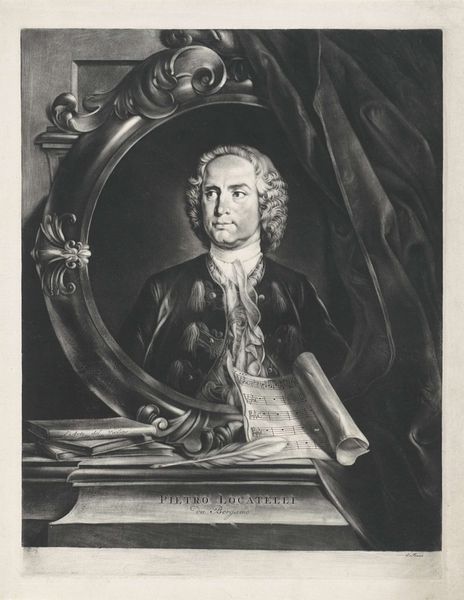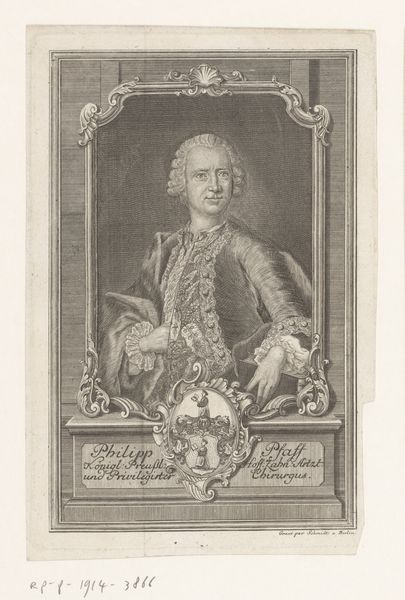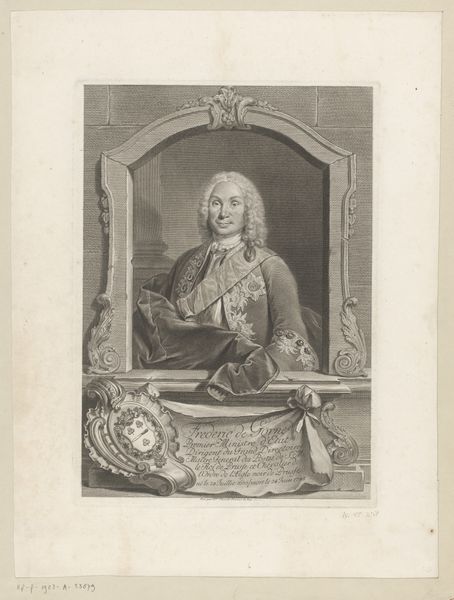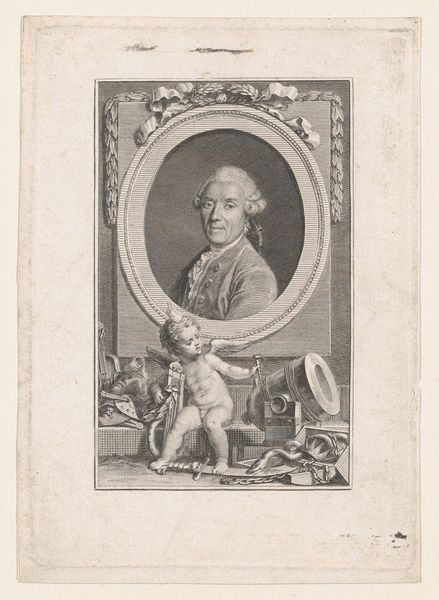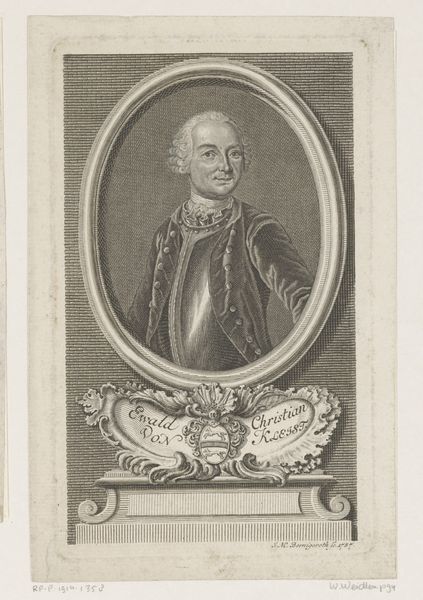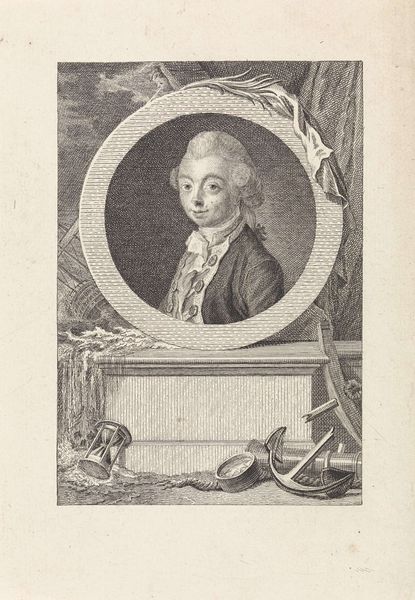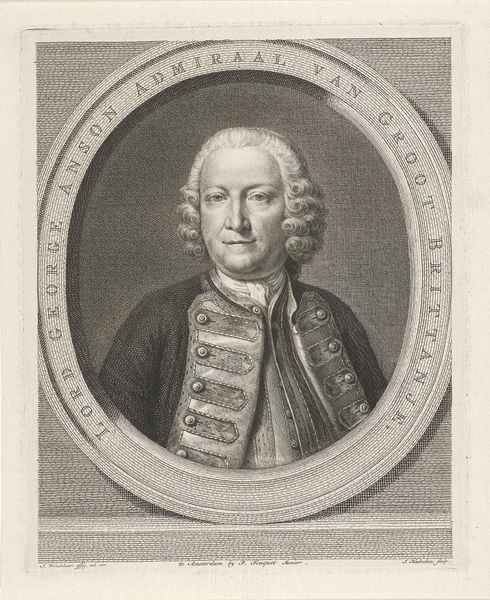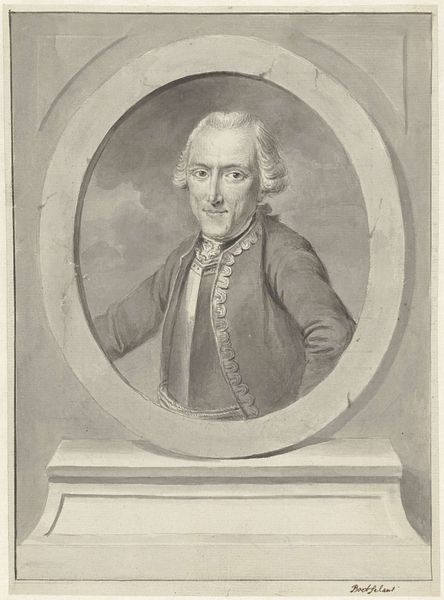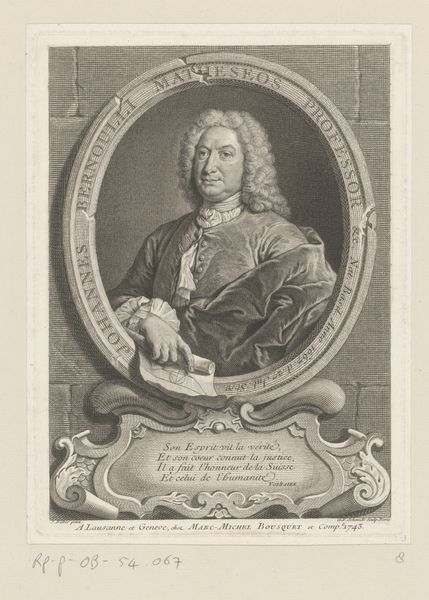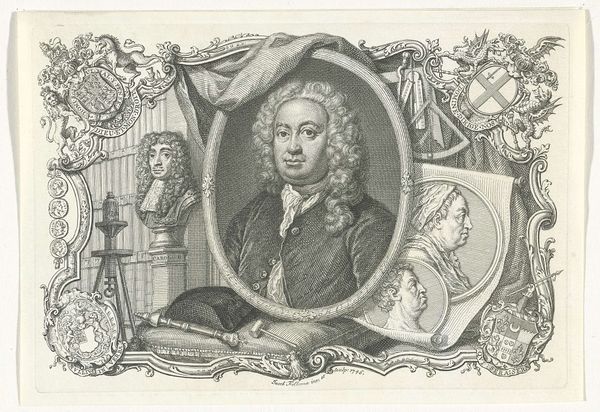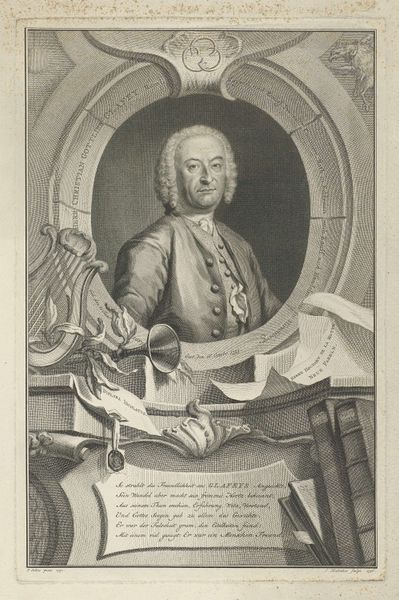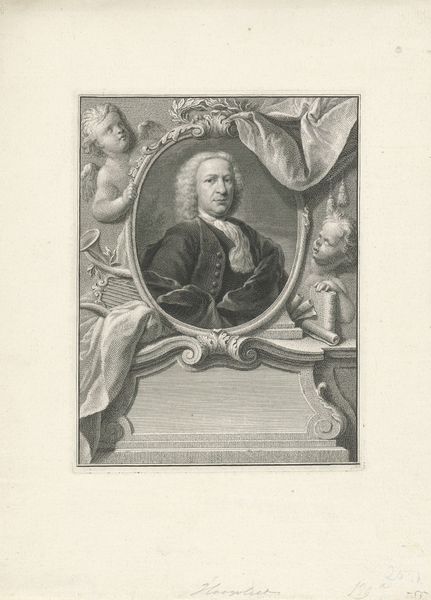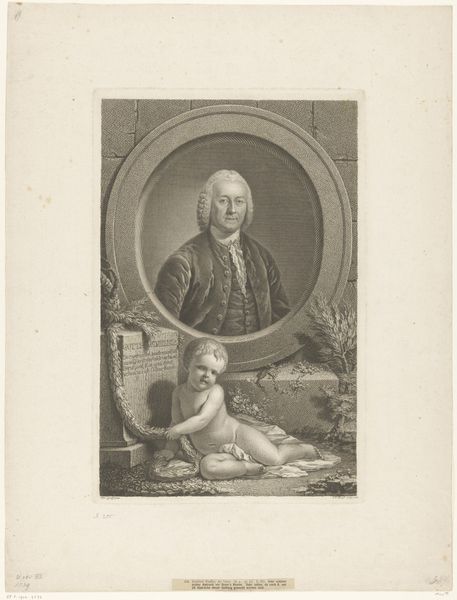
engraving
#
portrait
#
medieval
#
allegory
#
baroque
#
old engraving style
#
figuration
#
line
#
history-painting
#
engraving
Dimensions: height 367 mm, width 234 mm
Copyright: Rijks Museum: Open Domain
Editor: Here we have Jacob Houbraken's "Portret van George Anson met allegorische figuren," made sometime between 1708 and 1766. It's an engraving, and I'm immediately struck by how much is packed into this relatively small image. All the symbolic figures, like Neptune and what looks like a sea lion... It feels very much of its time, but I wonder what a deeper look might reveal. What strikes you most about this piece? Curator: As a materialist, I see this engraving less as a straightforward portrait and more as a document of its own making. Consider the labor involved. The engraver, Houbraken, transforms a concept, perhaps Anson's self-image or commissioned glorification, into a series of precisely etched lines on a copper plate. What kind of social context enables this type of labor? Editor: So, it's not just about representing Anson, but about the system that allows such images to be produced and consumed? Curator: Precisely. Who would have bought this engraving? Where would they have displayed it? The act of acquiring and possessing this print speaks volumes about the social stratification and networks of patronage in that era. Editor: The level of detail is extraordinary, when you think about the process. Were engravings like this considered "high art" at the time? Curator: That's precisely the boundary this approach challenges! We are accustomed to valorizing painting above printmaking, but analyzing the material reality allows us to see the skill, labor, and economic value inherent in its creation. The consumption of prints played a vital role in disseminating ideas. This image circulated. Oil paintings by contrast did not. Editor: That's fascinating. So looking closely at the *how* and *why* of its creation really changes how we value the work. Curator: Exactly. Understanding the materiality lets us understand the world that gave rise to this image, in ways traditional art historical approaches often overlook. Editor: I will never look at an engraving the same way again. Thank you!
Comments
No comments
Be the first to comment and join the conversation on the ultimate creative platform.
